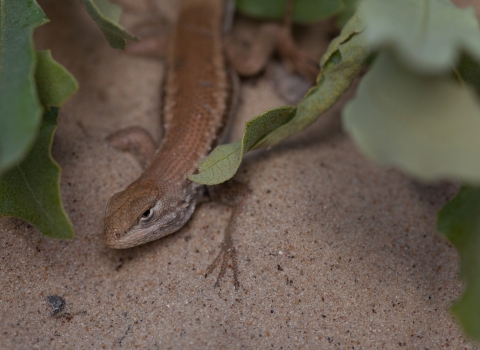WEST MONROE, LOUISIANA – January 12, 1999 -- The Nature Conservancy of Louisiana (TNC) announced today the purchase of approximately 4,750 acres from Plum Creek Timber Company, L.P. (NYSE:PCL). The Nature Conservancy plans to transfer the tract to the U.S. Fish and Wildlife Service over a five-year period to add to the existing Upper Ouachita National Wildlife Refuge for migratory bird conservation.
According to Lisa Creasman, State Director for the Nature Conservancy of Louisiana, "The cornerstone of The Conservancy’s success is finding common ground and forging effective partnerships. Plum Creek was instrumental in creating a unique agreement, which limited our risk and facilitated the project, making it a ‘win-win’ for all parties. This acquisition, valued at approximately $8.7 million, represents the largest financial transaction in the history of The Nature Conservancy of Louisiana."
"The citizens of Louisiana and Arkansas are the real winners," said Lindsay Crawford, Plum Creek’s Vice President, Southern Region. "We strive to find conservation buyers for unique properties with extraordinary public value and congratulate The Nature Conservancy of Louisiana and the U.S. Fish & Wildlife Service on their efforts to complete this transaction. We are excited about the habitat enhancements this area provides for the federally endangered red-cockaded woodpecker and many other species."
"This is a good example of a partnership between private industry, a non-profit organization and a federal agency and what can be accomplished when we work together. These lands, which include a portion of Finch Lake, will be an important addition to the Upper Ouachita National Wildlife Refuge," said Sam D. Hamilton, Southeast Regional Director for the U. S. Fish and Wildlife Service.
The property is located north of Monroe in Union Parish and will add approximately 4,750 acres of natural pine forest to the existing 37,000-acre Upper Ouachita National Wildlife Refuge, providing a corridor connecting the two existing units of the refuge. The parcel also supports an important bird conservation area conservation area
A conservation area is a type of national wildlife refuge that consists primarily or entirely of conservation easements on private lands. These conservation easements support private landowner efforts to protect important habitat for fish and wildlife and major migration corridors while helping to keep agricultural lands in production.
Learn more about conservation area in the region. Currently, there are five active clusters of red-cockaded woodpeckers, an endangered species, on the property. U.S. Fish & Wildlife official’s project that this acquisition may ultimately make it possible to support up to 20 clusters once a conservation management plan has been implemented.
The Conservancy’s mission is to protect plants, animals and the natural communities that represent the diversity of life on Earth by protecting the lands and waters they need to survive. Using a non-confrontational approach, the Conservancy works in partnership to effectively protect rare habitat and create a legacy for future generations. The Nature Conservancy is an international non-profit organization that relies on private donations from individuals, corporations and foundations to accomplish important conservation efforts.
Plum Creek is an integrated forest products company with more than 3.3 million acres located in the Pacific Northwest, Southeast and Northeast United States.
The U.S. Fish and Wildlife Service is the principal Federal agency responsible for conserving, protecting, and enhancing fish and wildlife and their habitats for the continuing benefit of the American people. The Service manages the 93-million-acre National Wildlife Refuge System comprising more than 500 national wildlife refuges, thousands of small wetlands, and other special management areas. It also operates 66 national fish hatcheries and 78 ecological service’s field stations. The agency enforces Federal wildlife laws, administers the Endangered Species Act, manages migratory bird populations, restores nationally significant fisheries, conserves and restores wildlife habitat such as wetlands, and helps foreign governments with their conservation efforts. It also oversees the Federal Aid program that distributes hundreds of millions of dollars in excise taxes on fishing and hunting equipment to state wildlife agencies.
X X X
Release #: R99-008


